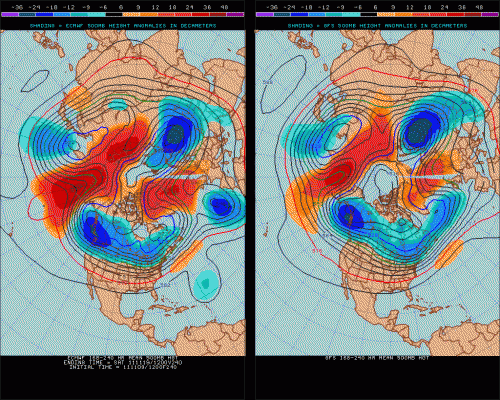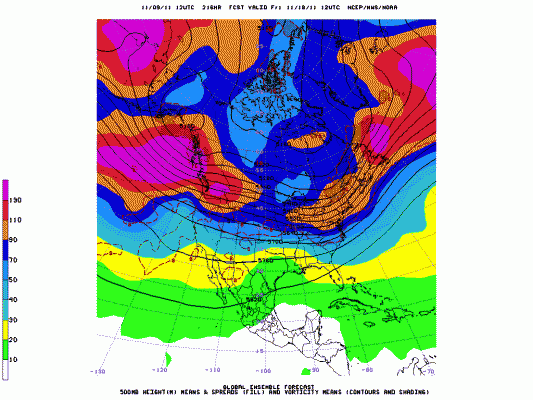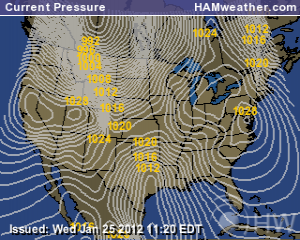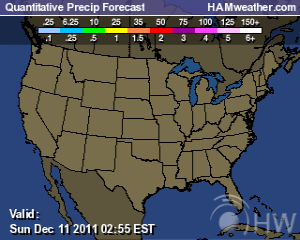Cold Air Marching Towards the United States
Evidence is increasing for the turn to colder weather showing up for the second half of the month and that elusive call of a threat of accumulating snow for the region by the end of the month. While a myriad of factors have to come in place for this to happen, one by one, the signalling is beginning to amass itself for a significant turn to colder weather for the Ohio Valley.
The map above shows the projected Day 8 to 10 day 500 millibar height mean for North America. As clearly seen most of Canada is much below normal. A big issue comes though on whether blocking will set up or not. Here is where the dilemma begins.
On the left side of the map is the European model. It shows ridging over Alaska and Greenland, which is what you want to see for cold air to infiltrate the central and eastern United States in readily available fashion. While this will take some effort by the reader, notice where the wind flow comes from based on the European. Up and across the North Pole, better known as cross polar flow, on all facets. From eastern Russia, the flow comes across the polar regions and making a bee line for Canada and spilling into the northern tier of the United States. Then as you look to western Siberia and far eastern Asia, one noticed a trough east of Japan. This is usually a precursor of a trough digging itself across the eastern United States about a week later. When you combine those factors present, the odds are stacked that cold weather is poised to enter the United States, a factor that has been lacking most of this fall season.
On the right side of the map is the GFS model. This is a model I tend to shake my head at several times during the winter because it simply does not handle heat transfer and changing patterns very well until the change is imminent. While it does show cooler tendencies, no direct cross polar flow is established. A significant difference from that of the European results when looking at the placement of ridging and troughing. The GFS shows weak blocking in Greenland and subtle ridging west of Alaska. To the common viewer, one may state that differences are small, but the difference in exact placement can be the difference between transient cold moving through the region or a pattern that begins to sustain itself for a period of time. With the known GFS faults, the European camp will be the camp I reside in as far as how the weather should evolve.
Backing up the stance that has been taken is the GFS Ensemble Mean Spread. What this is indicating is that the own model, which runs several different parameters, disagrees with itself. Compared to the first map, the same places that are suggested as being off in placement and in degree show up on the ensemble spread, just not by a little bit but a lot. Looking at the oranges, reds, and pinks, this suggests that the exact opposite of what the operational model shows should occur. The subtle troughing in Alaska should lend itself to much more ridging. The transient, in and out look over Greenland argues for stronger blocking and until the GFS can handle the changing pattern, it will struggle.
The evolution of the pattern opens up the question of “Will there be an accumulating snowfall for the Ohio Valley this month?” I have stated that I believe that the chance is higher than in past years. It does not mean it will work out the way I see it but even if the accumulation does not work out, it will be on our doorstep because all signals point to a sharp snap to colder. Then as time goes by deeper into November and December with the continued shifting south of the polar jet, longer and stronger cold air will build to our neighbors from the north and take aim into the central and eastern parts of the United States.
Enjoy the relative warmth now because cold air is indeed marching towards the United States.
For instant updates check me out at twitter @ http://twitter.com/OhioValleyWx or on facebook @ http://www.facebook.com/OVWeather
By Weather Specialist Josh Ketchen







You must be logged in to post a comment Login